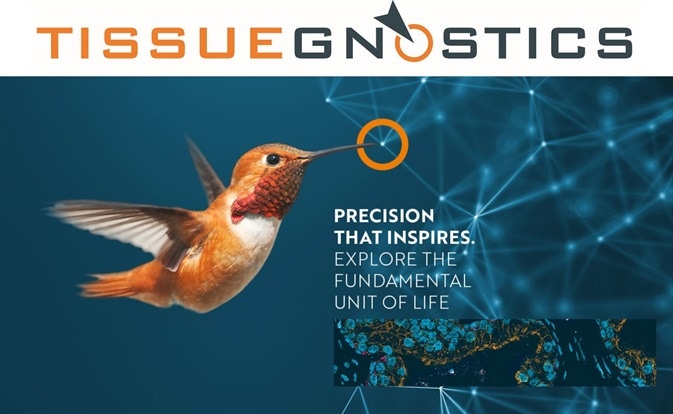Sponsored Content by TissueGnosticsReviewed by Maria OsipovaJul 31 2023
Although it has long been understood that cancer is a genetic disease, recent evidence has highlighted the role epigenetic changes play in cancer pathogenesis.1
Epigenetics denotes DNA modifications that affect gene expression but do not alter the DNA sequence, such as histone modification and methylation.2
Research has indicated that in chronic lymphocytic leukemia (CLL), epigenetic changes are a major factor in determining the disease’s different biological features.1
The function of epigenetic modification within CLL has been studied by researching TCL1A, an oncogene abnormally expressed in CLL. Higher TCL1A expression levels are often seen in CLL patients with adverse features, such as faster tumor cell proliferation, high-risk (cyto)genetics, and weaker response to treatment.
Genetically engineered mice that express high TCL1A levels develop a disease resembling CLL, including changes to the methylome. Previously, it was found that TCL1A interacts with the DNA methyltransferase 3A (DNMT3A) enzyme, causing a reduction in the enzymatic activity of DNMT3A, and in turn, participating in epigenetic reprogramming within CLL.1
However, beyond this finding, epigenetic regulation within CLL is understudied. Histone-modifying enzymes (HME), in particular, have not been examined in detail, even though histone modification plays a vital role in CLL pathogenesis.1
Intending to explore this further, researchers explored the interaction between KDM1A and TCL1A. KDM1A is a lysine-specific histone demethylase, and its upregulation has been linked to poor clinical outcomes in multiple cancers, including leukemias.

Image Credit: Lightspring / Shuttertock
The role of KDM1A in CLL
Led by Marco Herling from the University of Leipzig, Germany, the research team carried out several experiments using in vitro studies, animal models, and patient data and samples.
Initially, mass spectrometry helped study control and patient samples, finding that TCL1A interacts with KDM1A to augment its activity in B cells, denoting a potential mechanism by which augmented levels of TCL1A in CLL change the epigenetic signature of B cells.
The researchers compared levels of KDM1A expression in data from a prospective clinical trial of two anti-cancer treatments in CLL to examine the relationship of the enzyme with disease outcomes.
The results indicated that high KDM1A expression was linked to more aggressive features of the disease and poorer clinical outcomes within the group of 337 patients.1
Digging deeper
To further explore KDM1A and its relevance, the research team studied KDM1A knockdown and its effects in the mouse model presenting CLL.
The knockdown of KDM1A led to significantly extended overall survival (67 days as opposed to 39-41 days), decreased leukemic cell counts, and more stable white blood cell counts.
Examining the animals’ spleens revealed that this was a result of an increased rate of CLL-cell apoptosis combined with a lower proliferation rate.
Interestingly, the researchers showed that in addition to having a direct impact on B cells, KDM1A knockdown facilitated the reshaping of the tumor microenvironment, impairing features that support the proliferation of tumor cells and their survival. Breast cancer studies have also suggested this potential role of KDM1A in modifying the tumor microenvironment.1
The researchers compared RNA expression in the two models, finding that in cells from the knockdown model, 81% of 1,013 differentially expressed genes between the two genotypes were upregulated.
The researchers believe this suggests that global transcriptional activity in murine CLL is suppressed by KDM1A. In particular, programmed-cell-death gene expression was overrepresented in knockdown model cells, supporting the pro-apoptotic role of KDM1A further.1
Lastly, the team examined how anti-KDM1A compounds affect leukemic cells to confirm KDM1A as a potential therapeutic target in CLL, finding that pharmacologic KDM1A inhibition augmented histone methylation and stimulated CLL cell apoptosis.
The team also showed a synergistic effect between KDM1A inhibitors and existing therapies (venetoclax and idasanutlin), implying that anti-KDM1A agents have the potential to be used as combination therapies.1
The future of KDM1A inhibition in CLL
The team says that this is the first report on the role of KDM1A in CLL, ascertaining its pathogenic role and its therapeutic target potential.
Targeting HMEs may facilitate overcoming therapy resistance, which is a major challenge in CLL that often results in disease relapse. It may overcome resistance by exploiting synergisms between KDM1A inhibition and currently targeted molecular pathways.
However, according to the research team, further research is necessary to optimize the combinations for use in refractory/relapsed CLL.1
A powerful analytical assistant
The researchers employed TissueGnostics´ StrataQuest image cytometry software in this study to compute and analyze murine spleen sections, helping to divulge the impact of KDM1A on B apoptosis and cell proliferation.
StrataQuest’s automated analysis workflow was used by the researchers to define the percentage of KDM1A+ cells in murine spleen in Eμ-TCL1A mice overexpressing TCL1A with CLL-like syndromes and Kdm1a knock-down Eμ-TCL1A mice.
B220 expressing cells (murine B cells) and identified KDM1A+B220+ cells were further quantified. There were fewer marker-positive cells in Kdm1a knock-down Eμ-TCL1A mice for all of these markers. The number of Ki-67+B220+ proliferating B cells was also reduced.1
To characterize the tumor microenvironment in mice with CLL symptoms further, the researchers used StrataQuest to delineate the percentage of T cells, Ki-67+ T cells, and KDM1A+ T cells, which were all reduced in Kdm1a knock-down Eμ-TCL1A mice. The group assessed the quantity of murine F4/80+ macrophages that also express KDM1A in this model.1
StrataQuest is a contextual image analysis software that acts as a powerful tool for researchers wanting to study the cellular and molecular basis of a disease. StrataQuest is able to detect and quantify cells and biomarkers in tissue sections automatically.
A wide variety of biomarkers in tissues of any origin can also be detected, aiding in streamlining and automating the analytical process. Allowing statistical analysis, a user-friendly interface, and integration with other bioinformatics tools, StrataQuest is a valuable tool for researchers wanting to develop a deeper understanding of cancer biology.
References and further reading
- Jian Q, Stachelscheid J, Bloehdorn J, et al. Oncogenic role and target properties of the lysine-specific demethylase KDM1A in chronic lymphocytic leukemia. Blood. 2023; doi: 10.1182/blood.2022017230. [online ahead of print]
- National Cancer Institute (NCI) Dictionary of Cancer Terms. Available at: https://www.cancer.gov/publications/dictionaries/cancer-terms. Accessed May 2023.

About TissueGnostics
TissueGnostics (TG) is an Austrian company focusing on integrated solutions for high content and/or high throughput scanning and analysis of biomedical, veterinary, natural sciences and technical microscopy samples.
TG was founded by scientists from the Vienna University Hospital (AKH) in 2003. It is now a globally active company with subsidiaries in the EU, the USA and China and customers in 28 countries.
TG systems offer integrated workflows, i.e. scan and analysis, for digital slides or images of tissue sections, Tissue Microarrays (TMA), cell culture monolayers, smears and of other samples on slides and oversized slides, in Microtiter plates, Petri dishes and specialized sample containers.
Sponsored Content Policy: News-Medical.net publishes articles and related content that may be derived from sources where we have existing commercial relationships, provided such content adds value to the core editorial ethos of News-Medical.Net which is to educate and inform site visitors interested in medical research, science, medical devices and treatments.